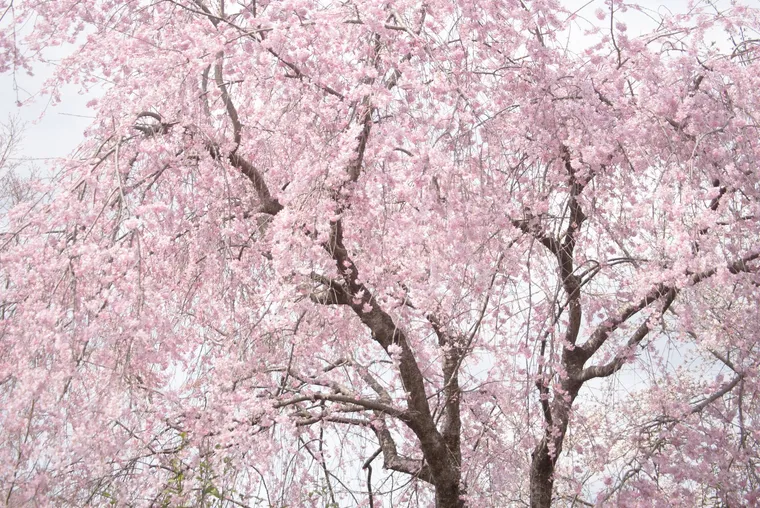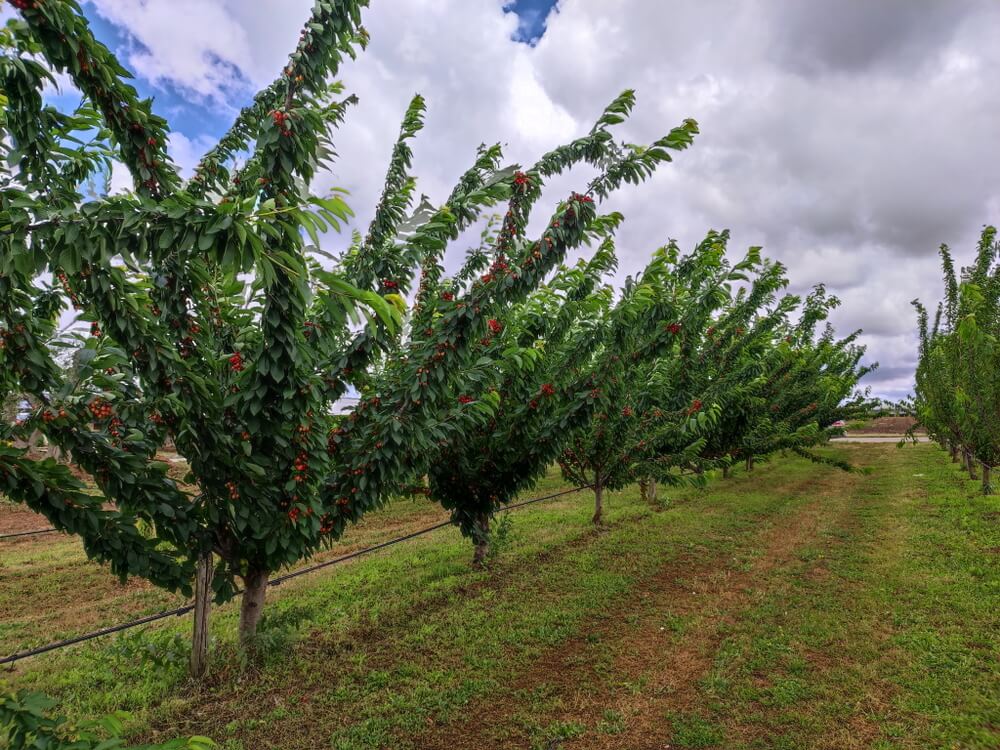The 1200 years of cherry blossom blooming demonstrate that the current climate is historically unprecedented.
First, the green bud appears, emerging from a tree branch like a chick peeking into the sky from its mother's nest.
Next, the clusters spread out from the center of the branch like a petal unfurling to bask in the sun. Then, a handful of flower stems lengthen, from which a cluster of plump cherry blossoms finally emerge in a dazzling bloom.
The cherry blossom (or sakura) in Kyoto, Japan, attracts crowds from all over the world, drawn by the enchanting visual spectacle and the opportunity to savor the almond fragrance of the flowers. But the time when the delicate flowers adorning Kyoto’s cherry trees bloom in spring is now almost two weeks earlier than it was in 1850.
This timing is one of the most important benchmarks for scientists monitoring the effects of climate change on flowering plants. “We are surpassing any climatic experience we have had as humans,” says Elizabeth Wolkovich, an associate professor at the University of British Columbia, Canada, who studies plant communities and climate change.
Global warming, largely driven by the burning of fossil fuels, has pushed temperatures so high in 2023 that it became the hottest year on record, followed by the warmest January and February ever recorded.
“For me, the cherry blossom record truly captures how extreme these changes are,” said Wolkovich, co-organizer of the International Cherry Blossom Prediction Competition, who argues that anthropogenic climate change is causing springs to arrive earlier, resulting in earlier cherry blossoms in places like Kyoto.
“We have never experienced anything like this before,” says Wolkovich; “It far surpasses the Little Ice Age or the Medieval Warm Period... we are heading into a new world.”
Peak bloom arrives earlier
The warmer springs leading to early blooms are not an isolated phenomenon limited to the famous sakura of Kyoto, but a trend that scientists are also observing in other places, such as Washington D.C. in the United States. According to data from the Environmental Protection Agency (EPA), on March 17, the cherry trees in the American capital reached their earliest peak bloom ever recorded, almost a week earlier than in the year 2000.
Peak bloom, the moment when nearly two-thirds of a tree’s blossoms open, usually lasts at least a week but varies depending on climatic conditions and species. Historically, late March to early April marks the peak bloom of the Yoshino cherry, but scientists believe this is changing in response to the rapid warming of global temperatures.
While bloom times vary from year to year, the long-term trend shows earlier blooming in Washington, according to Patrick Gonzalez, a climate change scientist and forest ecologist at the University of California, Berkeley.
“In Washington, the earlier bloom is consistent with human-induced climate change, but it is not scientifically attributable to it,” says Gonzalez. This means that while scientists have detected a statistically distinct change from natural variation, they have not yet attributed it to anthropogenic climate change. Other possible causes include the urban heat island effect.
This is why the research in Kyoto is so important. The city’s sakura records date back more than 1,200 years, a treasure trove of historical weather data that has been described as the longest annual phenological record, or study of biological cycles, on Earth.
And unlike what is happening, for example, in Washington D.C. (where the Yoshino cherry is also abundant), the research on early blooms in Kyoto “has been identified and attributed to human-caused climate change,” says Gonzalez.
In 2020, 2021, and 2023, Kyoto’s sakura recorded record early blooms, the earliest ever recorded, according to the BBC. A 2022 study found that anthropogenic climate change is the main cause of the early spring leading up to the peak bloom in Kyoto, advancing the season by about 11 days.
In a mid-emissions scenario, research estimates that by 2100 the arrival of cherry blossoms in Kyoto would be advanced by nearly a week. For some, this pattern should be seen as alarming.
“It is one of the most visible signs of the effects of excessive human carbon pollution,” says González, who adds that, in the worst case, climate change could further advance the cherry blossoms. “This demonstrates the seriousness with which we must reduce our carbon pollution to mitigate the most drastic impacts of climate change.”

Why Early Blooming Matters
The early arrival of spring and the resulting accelerated blooming of cherry trees can lead to ecological disruptions, such as a mismatch between flowers and their pollinators, and increased vulnerability to cold snaps that affect the trees themselves.
According to Lewis Ziska, a plant physiologist and associate professor at Columbia University (USA), although cherry trees do not produce edible fruit, the effects of climate change on blooming cherry trees are a good example of what other fruit trees, such as apple and peach trees in bloom, are experiencing at the same time.
If winter continues to warm faster than summer in much of the United States, the chill hours that a tree needs during its winter dormancy may not be met, causing some trees to fail to bloom in spring.
A blooming cherry tree needs a month of temperatures below five degrees Celsius to bloom fully in the warmth. In cherry blossom areas like D.C., a recent analysis of National Park Service data shows that the average spring temperature in D.C. has increased by about two degrees Celsius from 1970 to 2023. In 2017, a late frost killed about half of the tree’s blossoms.
“The date of the peak bloom might be accelerated in the future,” Ziska said, “but the final outcome of no flowers, if there is no winter, could happen sooner than we think.”
A Spiritual Sentiment
Cherry blossoms are not only a tool for scientists to understand changing temperatures, but their bloom also represents a “highly visible” historical symbol and cultural icon for people who celebrate the arrival of spring, says Soo-Hyung Kim, a plant ecophysiologist and professor at the University of Washington (USA).
“The arrival of spring is a feeling... of warmth,” says Kim, who adds that the ‘spectacular’ experience is not limited to Kyoto and Washington D.C. A grove of cherry trees in bloom in Seattle, USA, which recently reached its peak, is among dozens of places to admire the splendor of the bloom across the country, a list that includes everything from a botanical garden in St. Louis, Missouri, to an annual festival in Macon, Georgia.
For those who have not had the chance to walk under a canopy of blooming cherry trees, Ziska says the experience is similar to “walking into a church or cathedral.”
“You can imagine the colors. Roses of all shades, reds of every hue, and the blue sky behind them. And at some point, words just don’t suffice... there are no words to describe it,” says Ziska. “It’s a spiritual feeling. It touches a part of your soul that you can’t reach any other way.”
Source: National Geographic
Images: National Geographic
Cherry Times - All rights reserved











